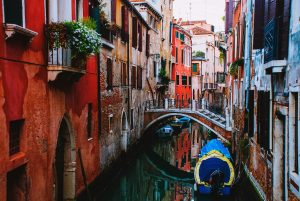Historic Mansions Transformed for Modern Living
When we think of historic mansions, we often envision grand, stately homes belonging to wealthy families of the past. These structures served as a symbol of power and influence, showcasing elaborate architecture and opulent furnishings. However, as times and lifestyles have changed, many of these mansions have undergone remarkable transformations to meet the needs and preferences of modern living. In this article, we will take a closer look at some of the most impressive historic mansions that have been transformed into modern homes, combining the best of both worlds.
The Preservation of History
One of the biggest challenges in transforming historic mansions into modern living spaces is maintaining the integrity and character of the original structure. These mansions often have significant historical and architectural value that must be preserved, which requires a delicate balance between modernization and preservation. In order to achieve this, many architects and designers work closely with historians and preservation experts to ensure that the transformation respects the original design and materials.
The Biltmore Estate
The Biltmore Estate in Asheville, North Carolina, is a prime example of a historic mansion that has been successfully transformed for modern living. Originally built in the late 1800s, the Biltmore Estate was the vision of George Vanderbilt, and it is the largest privately-owned home in the United States. Today, the mansion serves as a popular tourist attraction, but it also offers luxurious accommodations and amenities for those looking for a taste of modern luxury in a historic setting.
Stan Hywet Hall
Another stunning example is the Stan Hywet Hall in Akron, Ohio. Built in the early 1900s, this mansion was the former home of F.A. Seiberling, the co-founder of the Goodyear Tire and Rubber Company. After years of neglect, the mansion underwent a major renovation in the 1950s, which transformed it into a museum and event space. More recently, the mansion has been opened up for public tours, showcasing its impressive architectural and historical significance while also serving as a venue for weddings and other events.
The Integration of Modern Amenities
While preserving the history and character of these mansions is crucial, it is also important to incorporate modern amenities and comforts to make them suitable for modern living. This often involves incorporating elements such as smart home technology, energy-efficient systems, and updated electrical and plumbing systems.
The Vanderbilt Mansion
In New York’s Hudson Valley, the Vanderbilt Mansion is another prime example of a historic mansion that has been carefully updated for modern living. Originally owned by Frederick William Vanderbilt, this stunning Beaux-Arts style mansion boasts over 50 rooms, a bowling alley, a squash court, and a lavish indoor pool. Today, the mansion is a National Historic Site, offering visitors a glimpse into the lives of the Vanderbilt family, while also serving as a luxurious event venue.
Casa Loma
Casa Loma, located in Toronto, Canada, is a prime example of a historic mansion that has been transformed into a modern living space while also serving as a popular tourist attraction. Built in the early 1900s, this Gothic Revival style mansion boasts over 100 rooms, multiple towers, and a secret underground tunnel. Today, it offers visitors a glimpse into the luxurious lifestyle of Sir Henry Pellatt, while also serving as a popular event venue for weddings and other occasions.
Conclusion
The transformation of historic mansions into modern living spaces is a delicate process that requires a deep understanding and appreciation for their cultural and historical significance. However, when done correctly, it allows us to preserve and honor the past while also creating luxurious, modern homes that seamlessly blend the best of both worlds. These stunning mansions serve as a testament to the enduring legacy of their original owners and continue to fascinate and inspire us today.









